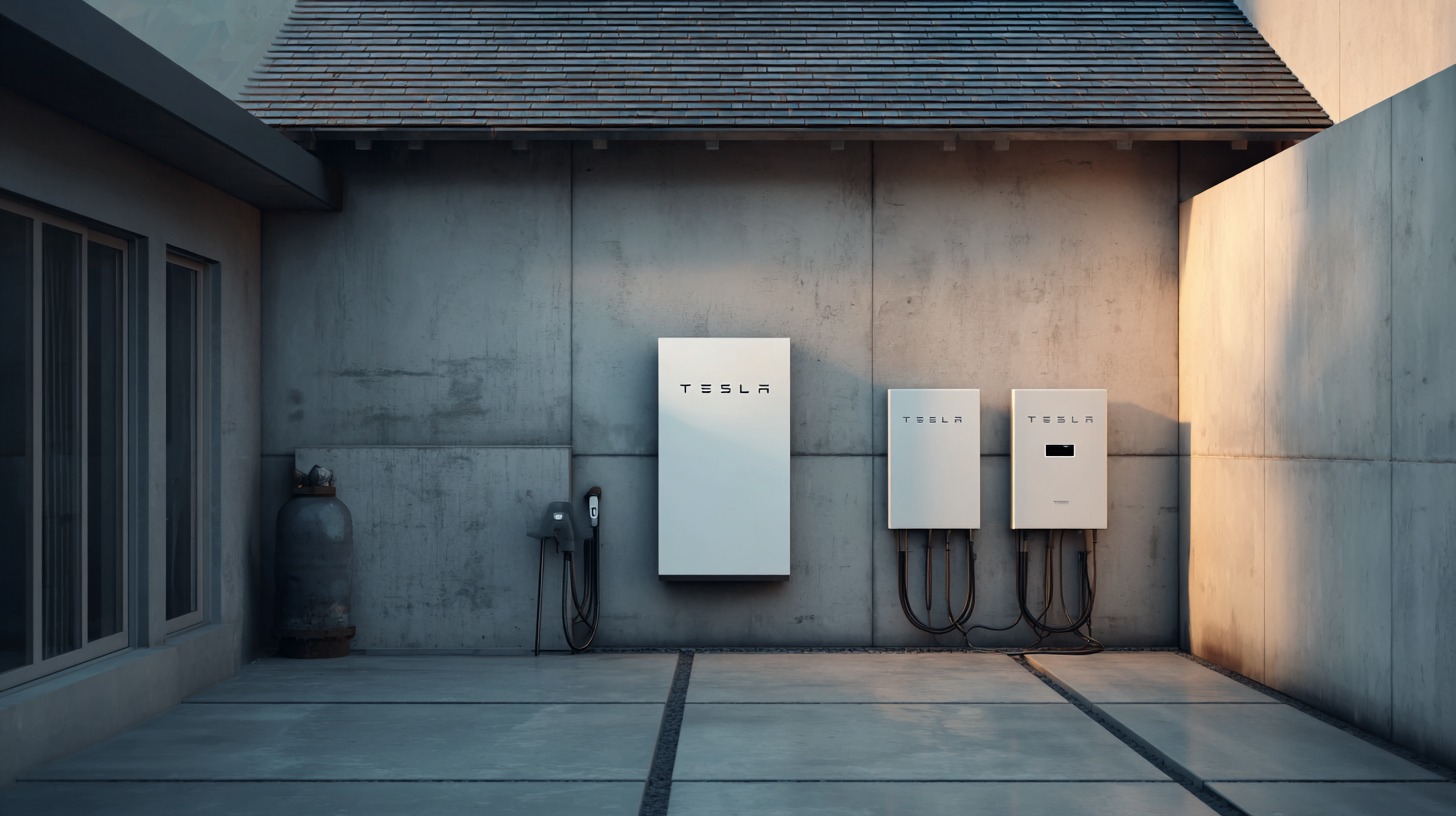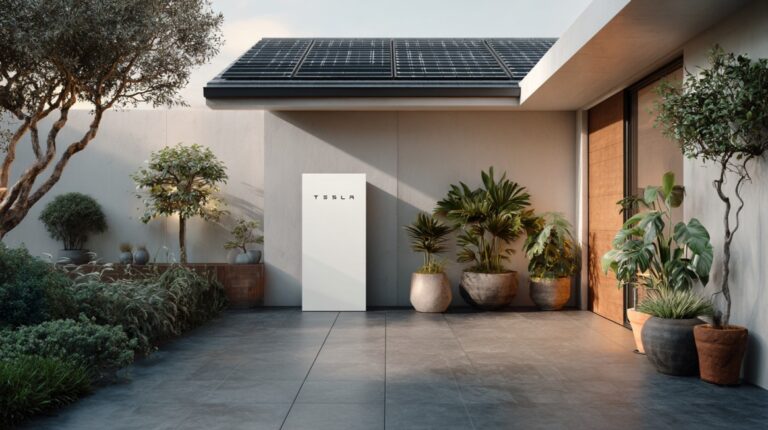Tesla Powerwall became a household name in home battery storage, but in 2025, buyers are increasingly looking elsewhere.
Rising costs, long installation wait times, limited compatibility with generators, and public dissatisfaction tied to Elon Musk’s controversies have shifted focus toward better-matched options.
Here comes a comprehensive breakdown of the best Tesla Powerwall alternatives currently available.
Coverage includes top-rated models, pricing insights, performance specs, and ideal use-case scenarios for homeowners and off-grid enthusiasts alike.
1. TeraHive Home Battery
TeraHive positions itself as a future-proof solution for households ranging in size and energy demand. The modular setup allows homeowners to choose between 6.6, 13.2, and 19.8 kWh capacities, accommodating both modest and energy-intensive setups.
Designed with adaptability in mind, the system supports expansion over time.
Output performance reaches a maximum of 10 kW, providing enough power for the simultaneous operation of heavy appliances like HVAC systems, ovens, and washers. AC-coupled design ensures smooth compatibility with a wide range of inverters and existing solar arrays.
Its construction handles extreme temperatures, both hot and cold, making it suitable for installations in various climates. A 10-year warranty reflects confidence in durability and performance.
Visual appeal adds to its practical strengths, often catching the eye of architects and homeowners who prioritize modern design.
- Configurable sizes: 6.6, 13.2, and 19.8 kWh
- 10 kW peak power output
- AC-coupled for compatibility with most systems
- Wide temperature tolerance range
- 10-year warranty
- Sleek, minimalist design
2. Enphase IQ Battery 5P
View this post on Instagram
Enphase IQ Battery 5P is a solid choice for those with moderate energy needs or looking for partial home backup. With a baseline capacity of 5 kWh, the system is designed to expand alongside solar growth plans, allowing seamless scaling for the future.
A major benefit lies in its tight integration with the broader Enphase microinverter ecosystem. Those already using Enphase technology will find system setup, monitoring, and management nearly effortless.
Built with lithium iron phosphate (LiFePO4), it promises better safety, thermal stability, and extended lifecycle.
Covered by a 15-year warranty, it delivers long-term peace of mind and is especially well-suited for residential users prioritizing longevity and reliable customer service.
- 5 kWh base capacity (expandable)
- LiFePO4 battery chemistry
- Seamless compatibility with Enphase microinverters
- 15-year warranty
- Excellent for partial home backup
3. LG Chem RESU Prime
LG Chem RESU Prime targets users seeking efficient, compact, and proven solutions for energy storage.
Available in 9.6 and 16 kWh sizes, these DC-coupled batteries offer tight energy conversion performance and are designed for pairing with specific inverter brands.
Efficiency gets a boost due to direct DC coupling, reducing power loss during charging and discharging. These systems work best in setups that prioritize energy conservation over maximum flexibility.
Support and documentation are highly regarded, making it a frequent pick among solar professionals working on tightly integrated systems.
- Capacities of 9.6 and 16 kWh
- DC-coupled for high efficiency
- 10-year warranty
- Reliable support and professional-grade compatibility
4. Generac PWRcell
Generac PWRcell focuses on delivering whole-home backup through its modular architecture. With the ability to expand up to 36 kWh, the system suits homes with high energy consumption and those needing extended backup duration.
Generator integration makes it a standout choice for areas prone to grid outages or homes requiring emergency power continuity.
DC coupling optimizes energy use by minimizing conversion losses. Efficiency hits 88%, solid performance for a modular system of this scale.
Popular among rural homeowners and disaster-preparedness advocates, it balances reliability with performance.
- Expandable to 36 kWh
- DC-coupled architecture
- Compatible with generators
- 88% roundtrip efficiency
- Full-home backup support
5. Panasonic EverVolt
@solarsme The Panasonic EverVolt Gen 3.0 is your ultimate home backup solution! This advanced energy storage system seamlessly integrates with solar panels and the grid, ensuring uninterrupted power during storms, hurricanes, and blackouts. Add the SmartBox for extended storage and automatic energy management. Stay powered, stay prepared! Learn More: https://solarsme.com/energy-storage-and-battery-backup/panasonic-evervolt-gen-3/ #panasonic #panasonicevervolt #pansonicbattery #batterystorage #batterybackup ♬ original sound – Solar SME Inc.
Panasonic EverVolt bridges the gap between flexibility and high-end capability.
Offering hybrid functionality, it supports both AC and DC inputs, and can be scaled up to 72 kWh, ideal for large properties or those pursuing energy independence.
Roundtrip efficiency reaches 94%, reflecting the engineering quality built into the system. A 12-year warranty ensures strong long-term value. The model is a clear candidate for users planning for full off-grid operations or major future expansions.
- Hybrid AC/DC compatibility
- Modular scalability to 72 kWh
- 94% round-trip efficiency
- 12-year warranty
- Suitable for large-scale setups
6. Sungrow SBR HV
Sungrow SBR HV offers an effective mid-range solution for those prioritizing performance and pricing. The base 12.8 kWh model is available for around $9,500 and supports modular expansion.
Often selected by installers due to ease of setup and reliability, it has gained widespread attention, particularly in markets like Australia.
Global recognition and performance parity with Tesla helped push it to a top-tier ranking in 2025 installer feedback.
- 12.8 kWh base capacity
- Priced around $9,500
- Modular and stackable design
- Globally popular with installers
- Matched Tesla in 2025 installer rankings
7. Sigenergy Sigenstor
@yeanswers Watch the new SigenStor Battery install!! #solarbattery #battery #sigenergy #sigenstor #batterystorage ♬ original sound – your energy answers
Sigenergy Sigenstor combines solar inverter, energy storage, and EV charging into a single, all-in-one system.
Built to serve smart home energy applications, it reduces the need for multiple devices and installers.
Capacity expands to 32 kWh, making it suitable for medium to large households. The installation experience receives strong praise due to an intuitive app and automated commissioning.
Gaining momentum globally, it is viewed as one of the fastest-growing systems for homeowners seeking compact, integrated energy solutions.
- Integrated inverter, battery, and EV charger
- Expandable to 32 kWh
- Designed for smart home integration
- Smooth commissioning process
- Rapid adoption in 2025
8. BYD Battery-Box HVM
BYD’s Battery-Box HVM shines when paired with Fronius inverters, often considered an ideal match due to optimized firmware compatibility.
Built around a modular, DC-coupled framework, it provides strong energy conversion efficiency and adaptability.
Used widely in Europe and Asia, it has built a trusted installer reputation thanks to reliability, support, and performance. Homeowners and professionals value it for both performance and straightforward configuration.
- Tailored for Fronius inverter setups
- Modular, DC-coupled design
- High efficiency
- Broad international use
- Trusted by solar professionals
9. Alpha-ESS Smile5
@firstsunsolarYesterday, our installers completed an exciting upgrade for a family in Helensvale, Gold Coast. We installed our new product, the Alpha ESS SMILE-G3-S5 – a 10.1kWh battery & 5kW inverter all-in-one cabinet. By swapping out one of their existing inverters with this new system, they can now… • Store the excess energy their system produces. • Enjoy greater efficiency with their energy consumption. • Have peace of mind with black-out protection. • Track their system performance with in-app monitoring. Ready to enhance your solar setup? Give us a call on 1800 886 877 or visit https://www.firstsunsolar.com.au/ for an obligation-free quote.♬ original sound – FirstSunSolar
Alpha-ESS Smile5 delivers exceptional value for budget-conscious homeowners. With 13.3 kWh of capacity for under $10,000, it provides reliable backup power without excessive investment.
Hybrid AC/DC capability allows compatibility with a broad range of system types.
Widely chosen for its simplicity in setup and cost efficiency, it makes an ideal entry point for those new to home energy storage.
- 13.3 kWh for under $10,000
- Hybrid AC/DC system
- Flexible inverter compatibility
- Easy installation process
- Ideal for budget-sensitive users
Why Consider a Powerwall Alternative?
Many homeowners now prioritize energy independence and system flexibility, especially during uncertain power grid conditions. Tesla Powerwall, once considered the gold standard, no longer meets expectations for those wanting fast installation, full integration, and brand neutrality.
In some regions, Powerwall installations take months to complete, leaving users without a reliable backup during peak demand or weather-related outages.
Another frustration comes with generator integration. Tesla’s battery system often fails to support gas-powered generators out of the box. To resolve this, users must purchase additional equipment or redesign part of their system, adding time and cost.
For that price, many expect more capacity, features, or at least full compatibility.
Solar enthusiasts aiming to expand their photovoltaic array face another issue. Powerwall limits solar input to 7.6 kW AC, restricting future scalability. That becomes a serious constraint for anyone investing in long-term energy autonomy.
Public perception also plays a growing role. Elon Musk’s political presence and ongoing controversies have affected Tesla’s reputation. Buyers seeking neutrality or wishing to avoid high-profile media figures are turning their attention toward other manufacturers offering similar or better specs with quieter operations.
Warranty terms are another reason to look elsewhere. Powerwall’s 10-year warranty now lags behind competitors offering 12 to 15 years. For a product meant to last a decade or longer, every extra year matters, especially with battery replacement costs on the rise.
System compatibility raises more challenges. Powerwall requires specific settings or equipment, making it harder to pair with inverters or monitoring systems already in place. Instead of tearing out existing infrastructure, many homeowners prefer batteries designed to adapt.

Key Buying Considerations
Choosing a battery storage system means more than picking a brand. It’s about matching performance, safety, and value to household needs. Battery specs define how systems behave during outages, daily cycling, and seasonal variation. Several critical points should shape the purchase decision, and the most impactful ones are listed below.
First, storage capacity is central. Measured in kilowatt-hours (kWh), this figure tells how much energy the battery holds. More capacity allows for longer operation during outages or greater independence during evening hours.
Next, power output matters. Systems are rated for continuous output (what they can deliver constantly) and peak output (short bursts). High peak output is important for starting appliances with large power draws.
Battery chemistry significantly impacts safety, efficiency, and durability. Many manufacturers now use lithium iron phosphate (LiFePO4), known for thermal stability, long cycle life, and fewer degradation issues compared to traditional lithium-ion cells.
Connection type is another major factor. AC-coupled batteries pair well with homes that already have solar inverters. DC-coupled batteries offer better efficiency but typically require a clean-slate design.
- Battery capacity, ideally matching peak daily usage
- Power output, both continuous and peak, for performance stability
- Battery chemistry, with preference toward LiFePO4 for safety and longevity
- Coupling method, AC for retrofits and DC for new builds
- Warranty duration, aiming for 12 to 15 years, where possible
- System compatibility, especially with inverters like Enphase or Fronius
- Total system cost, including labor and accessories, not just battery price
- Modular expandability, enabling future capacity upgrades
- Smart home readiness, such as EV charger support and remote monitoring
The Bottom Line
Different homes call for different energy solutions. Modular systems like TeraHive or BYD cater to expandability. Panasonic EverVolt targets high-capacity needs. Alpha-ESS Smile5 delivers strong performance on a budget.
Choosing the right battery means balancing your system’s needs with cost, integration, and energy independence goals.
Always consult local installers. Regional incentives, utility rates, and rebate programs can influence the final cost and effectiveness of your investment.

